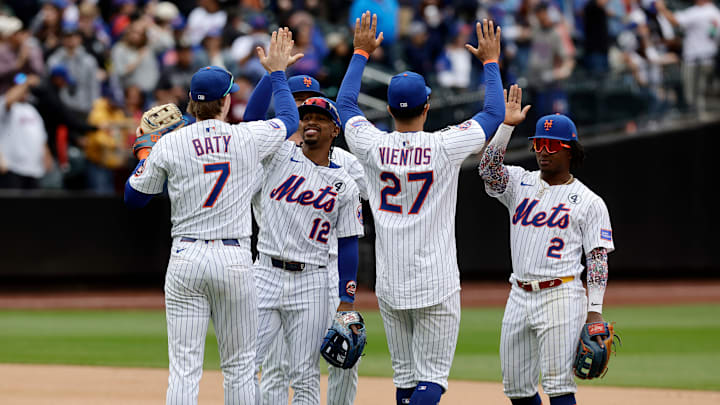The New York Mets find themselves at a pivotal juncture as the trade deadline approaches, with the front office keenly assessing which assets could yield the best return to bolster the current roster. Amidst a crop of young infielders, a consensus is emerging regarding who should be the primary candidate for a trade.
Luisangel Acuña, a promising prospect with an intriguing blend of skills, stands out as a player the Mets should look to move. Yet his unique profile presents a significant challenge in securing a desirable return.
The paradox of Luisangel Acuña's potential versus actual market value
Acuña's on-field value to any team is undeniably linked to his strong defensive capabilities, impressive positional versatility across the middle infield, and game-changing speed. Throughout his career, and particularly in the 2025 season, Acuña has showcased an ability to handle both shortstop and second base with aplomb, providing a valuable defensive anchor.
His 12 stolen bases in 77 games in 2025 underscore his disruptive speed, a tool that can turn singles into doubles and put immediate pressure on opposing defenses. These attributes make him an attractive option, especially for teams seeking reliable defense and a spark on the basepaths.
However, the problem lies in his offensive production, which has lagged behind expectations and significantly impacts his projected role in the majors. In 2025, Acuña's statistics tell a clear story of struggle at the plate. His 69 wRC+ further illustrates his below-average offensive contribution. With no home runs in 175 plate appearances, his bat profiles him more as a utility or bench player than an everyday starter, especially compared to the power potential of other Mets infield prospects like Mark Vientos, Brett Baty, or even Ronny Mauricio.
This limited offensive upside and projected bench role severely diminish Acuña's market value. While his defensive prowess and speed are assets, they are often seen as more easily replaceable commodities in the current MLB landscape compared to the potential for significant offensive production. Teams looking for a trade partner often prioritize players with high ceilings or established power, something Acuña has yet to demonstrate consistently.
Consequently, trading Acuña, despite his clear fit for a move, might not yield the "better return" that the Mets desperately seek at this trade deadline, presenting a unique dilemma for a team aiming to maximize its assets. Ultimately, if improving the roster for their World Series aspirations requires trading an infielder for a valuable return, the Mets may well have to sacrifice another player with more perceived value than Acuña.
